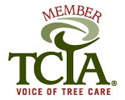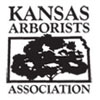HAGCSA - Safety First!
Published in the “Heartbeat” Volume 40, No. 9 November 2008 – The Official Publication of the Heart of America Golf Course Superintendents Association
When it comes to “down-time” projects this winter, I strongly encourage everyone to prepare and think Safety First before tackling tree care projects! You spend all year training employees; the last thing you want is to lose them during the slower winter months, so you find special projects to keep everyone busy. General tree work around the course usually fits into this description. With proper planning and training, your course can perform many of the routine maintenance and general tree care projects safely and efficiently.
Tree workers, if separated from the classification of landscaping, would be in the top 3 most dangerous jobs in the world. This statistic shows how important it is not to skimp on the continued training for this special project. Please don’t take it lightly just because you’ve used a chainsaw your whole life.
1) First and foremost, review your insurance policy and coverage. For instance, most insurance policies will not cover anyone on a ladder (one of the most dangerous situations when pruning or removing), so you need to be sure if you are putting someone up there, you have the coverage if there were an accident. The same goes for aerial lifts. If the lift were to fail or if someone was injured while operating it, would you, the course, and the employee be covered?
2) There are too many safety precautions to list, but here are few things to think about before proceeding with the work at hand:
a. Chain Saw Safety: Personal protective equipment, kickbacks and proper positioning behind saw, both hands on saw with proper grip and thumb wrapped around top handle, proper starting procedures including NO drop starting, proper chain tension and sharpening, no cutting over your shoulders, always engaging the chain brake when moving, and choosing the right size and kind of saw for the job.
b. Proper PPE – Personal Protective Equipment: sturdy boots, hearing protection, eye protection, hard hat, chaps and gloves. All these should be a minimum if you’re the one using the chainsaw. You can be completely prepared to safely use a chainsaw for under $150.00 and every person using one needs to have the safety basics. Refer to ANSI Z133.1 for specifics on Safety Requirements for Arboricultural Operations or The American OSHA Regulation 1910.266 requiring employed chainsaw operators to wear the above protective equipment.
c. First Aid and Emergency Procedures: Review and keep phone and first aid kit close at hand.
d. Proper Lifting Techniques: for the heavy logs you’re moving.
e. Chipper Operation: If you’re renting a chipper, be sure everyone is trained on how to safely operate.
A must read article to review: http://www.redcross.org/pubs/dspubs/chainsaw.pdf
3) Preparing and performing the work:
a. Pruning: Structural development, effects of pruning and proper 3 cut method for removing limbs such as in raising trees
b. Felling/Removing trees
i. Factors/Conditions that affect removals: Wind, tree lean, canopy weight, rot/decay, notches/face cuts, wedges, holding wood, pull ropes, targets – (consider the worst case scenario and ask yourself if attempting it is worth the risk?)
ii. Safety and hazards associated with the person felling the tree: Watch for dead limbs over the person making the notch, have a clear path and secondary route of retreat, make sure you have safe footing and if there is any doubt, DON’T DO IT!
c. Debris Removal: Learn the most efficient way to stack brush and debris according to how it will be processed, chipper or grapple truck. Utilize it for heating or sell for firewood? Chip and use on-site for wet/troubled areas, general paths or construction concerns? Rarely is it cost effective to rent a dumpster, so get some advice and plan ahead for the most efficient way to dispose of the debris.
Good articles to review: http://www.oznet.ksu.edu/library/FORST2/mf2103.pdf and http://www.na.fs.fed.us/Spfo/pubs/howtos/ht_prune/cuts.htm
While much more detailed information is available, there are some of the basics. Visit your state extension office, local chain saw dealer, review the sites listed above or get someone in for hands-on training before you start the work. If you don’t feel comfortable on a project, follow your instincts and let a professional certified arborist perform the work.
Bret Cleveland
ISA Certified Arborist – MW 4393A





<< Home